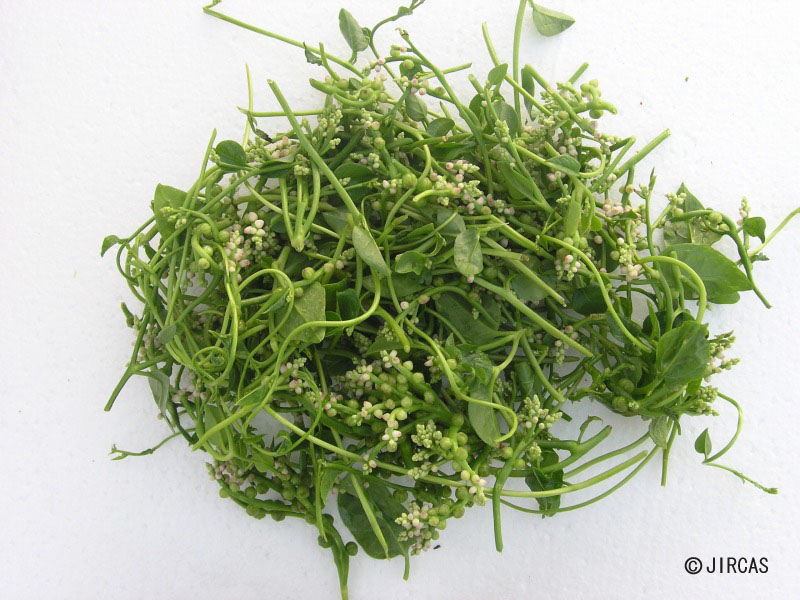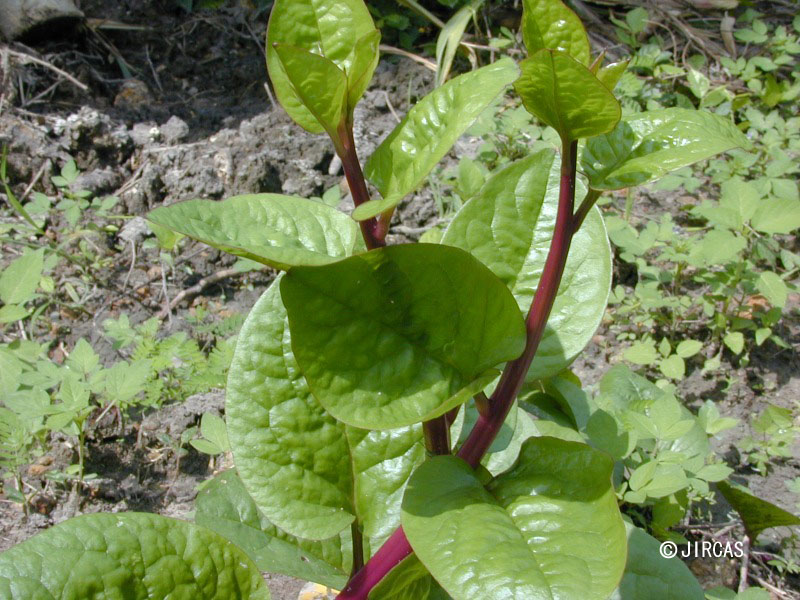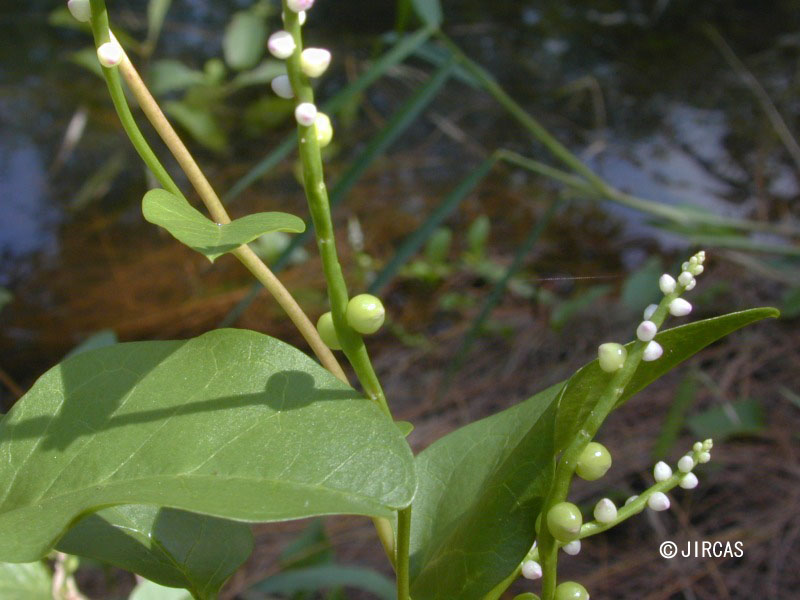Basella alba L. (Basellaceae)
- Scientific name
- Basella alba L.
- Family name
- Basellaceae
- Common name
- Ceylon spinach (English); tsurumurasaki (Japanese)
- Local name
- Phak plang
Short-lived perennial, herbaceous climber, 2–6 m long, succulent. Stem slender, smooth, green or purple. Leaves alternate, simple, ovate or nearly round, 5–15 × 4–10 cm, fleshy, dark green or purplish. Petiole short, fleshy. Inflorescence a spike, hanging, axillary, 3–21 cm long. Flowers inconspicuous, sessile, 3-4 mm long; white, pink, or purple; bisexual. Ovary superior, rounded, styles 3, united at base. Stamens 5. Fruit a depressed, globose pseudo-berry, 4–7 × 5–10 mm, purplish-black, with fleshy perianth enclosing the ovary after flowering; containing a violet juice. Seeds single.
Grows well in tropical lowlands at elevations up to 500 m a.s.l., but survives even at 3,000 m a.s.l. and in temperate regions. It is a short-day plant, with flowering precluded when day length exceeds 13 h. Easily propagated by stem cutting or seed sowing on raised beds, and commonly grown on trellises.
Young shoots and flowers are harvested year-round, steamed or blanched, and served in nam phrik (dipping sauces) or curries. Edible parts contain 91 g water, 2.1 g protein, 0.3 g fat, 3.9 g carbohydrates, 1.3 g fibre, 1686-6390 IU, vitamin A, 29-166 mg vitamin C, 16–117 mg calcium, and 1.2–3.1 mg iron per 100-g serving.
Young shoots and flowers are harvested year-round, steamed or blanched, and served in nam phrik (dipping sauces) or curries. Edible parts contain 91 g water, 2.1 g protein, 0.3 g fat, 3.9 g carbohydrates, 1.3 g fibre, 1686-6390 IU, vitamin A, 29-166 mg vitamin C, 16–117 mg calcium, and 1.2–3.1 mg iron per 100-g serving.






